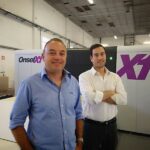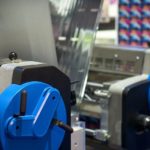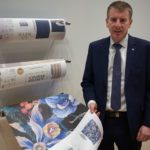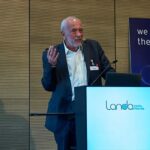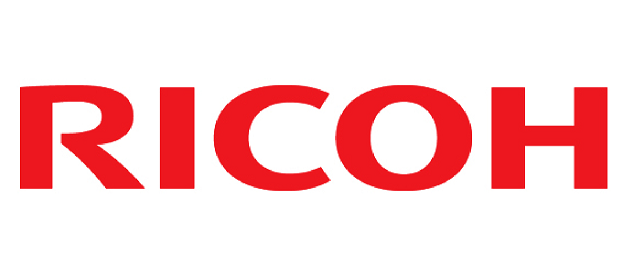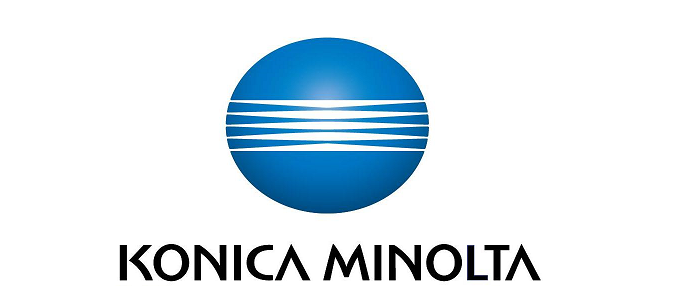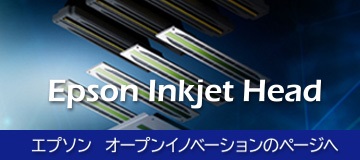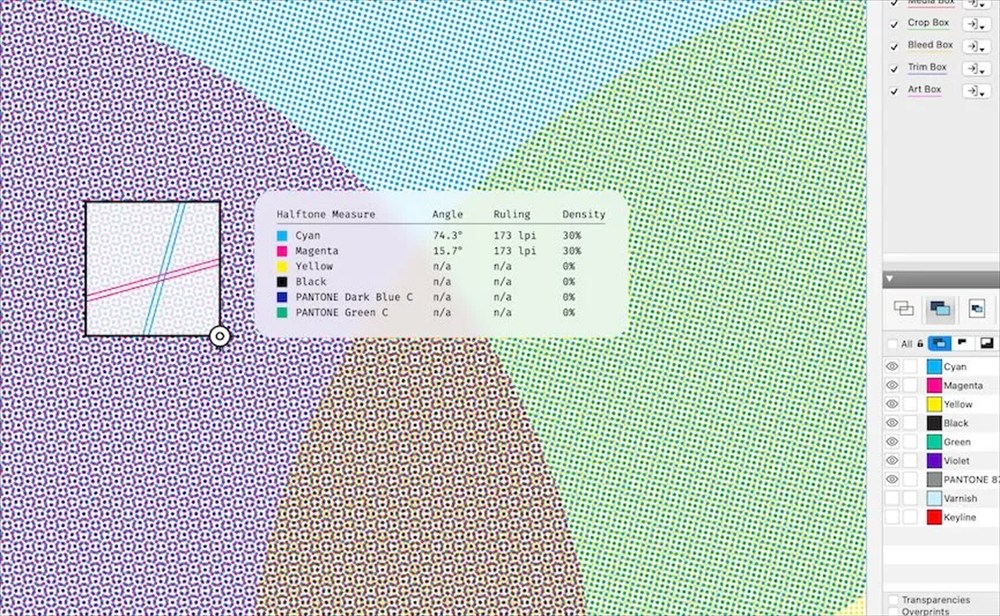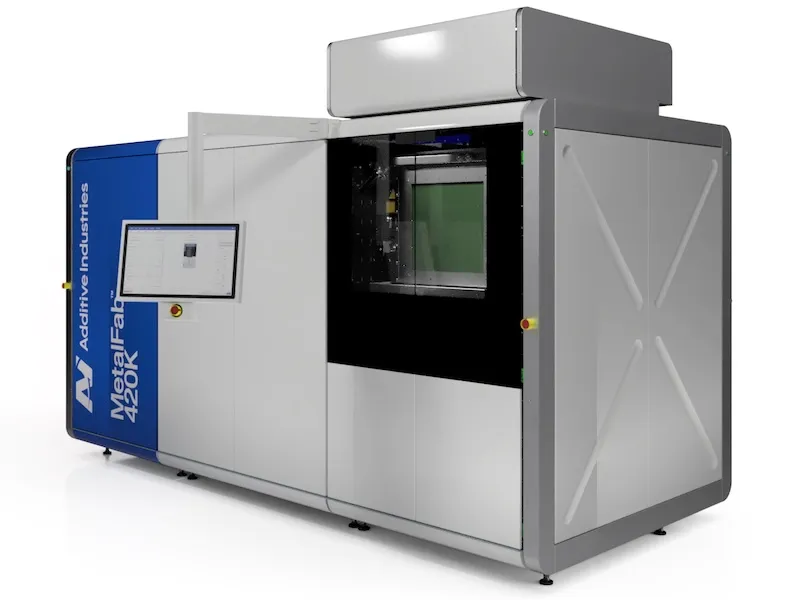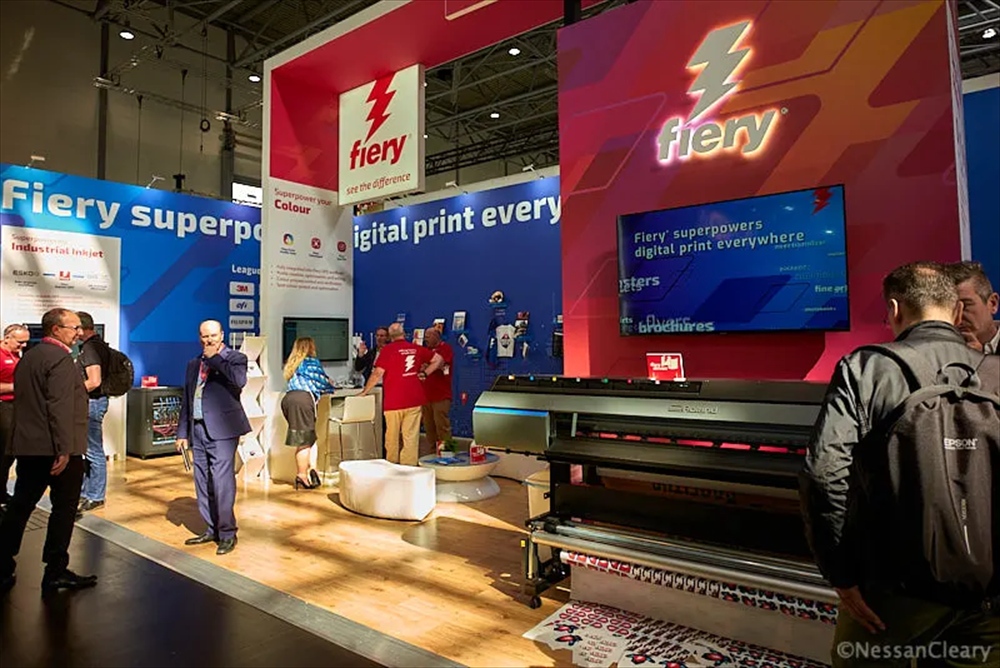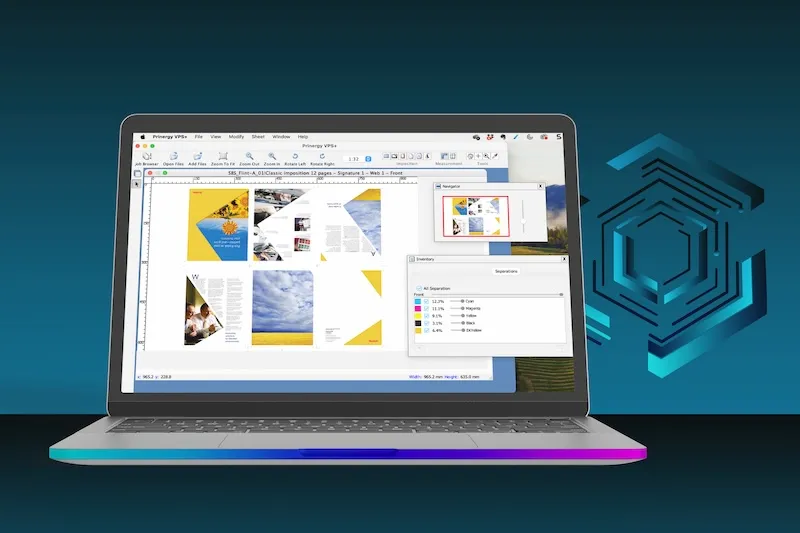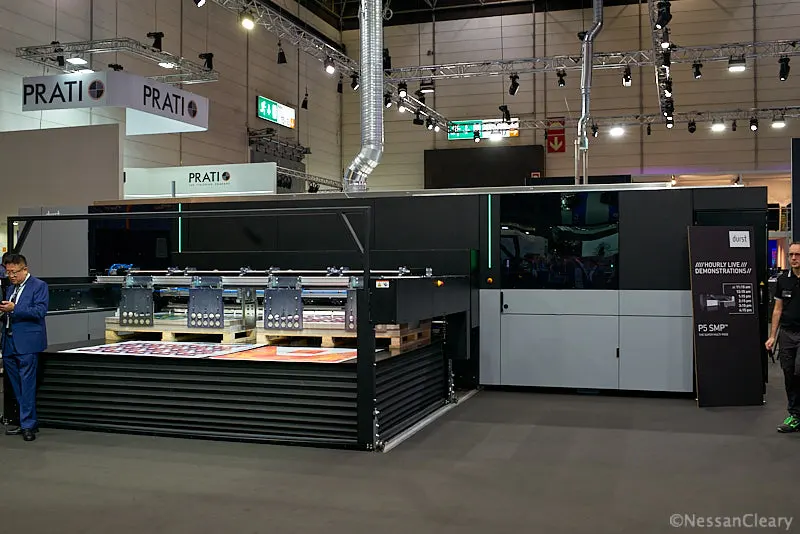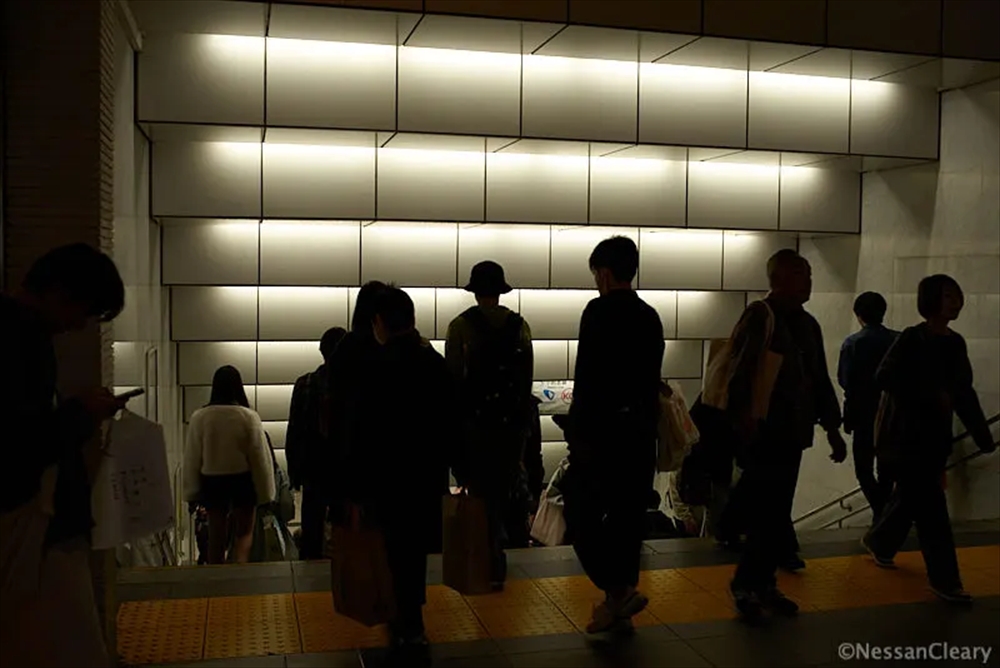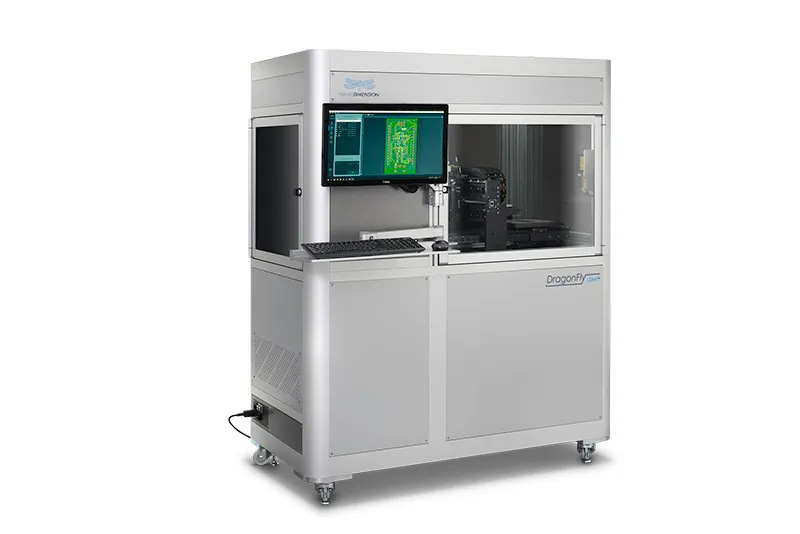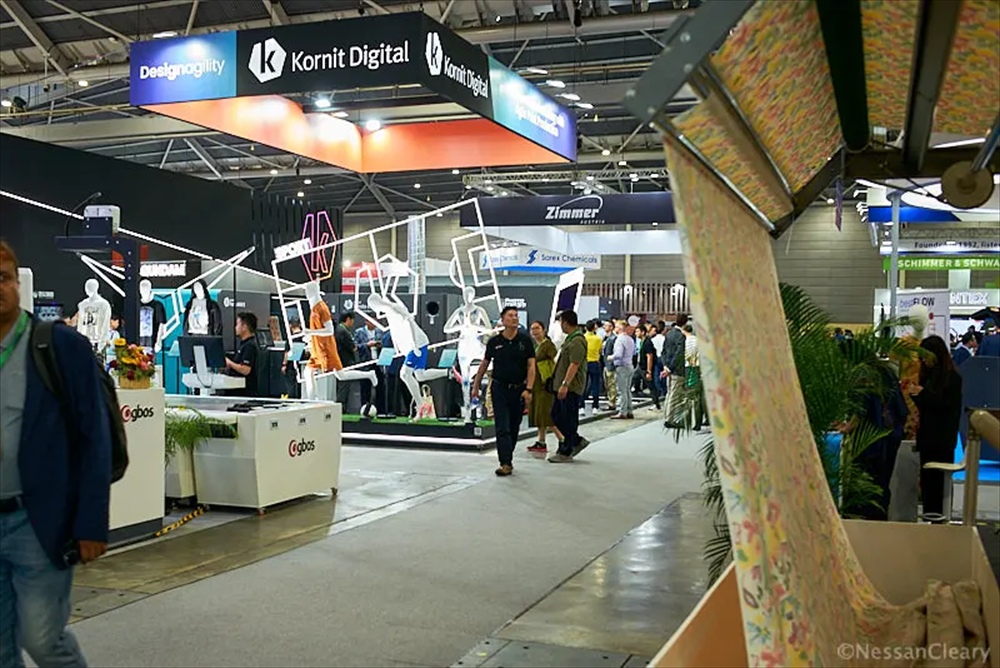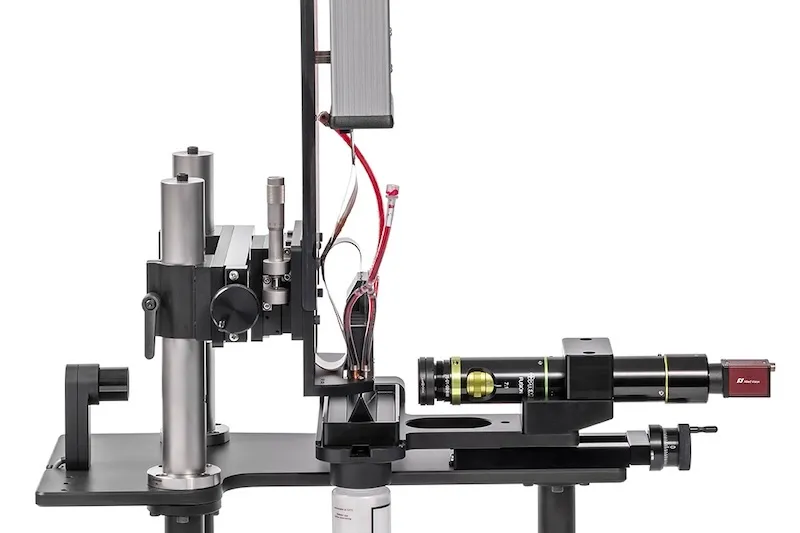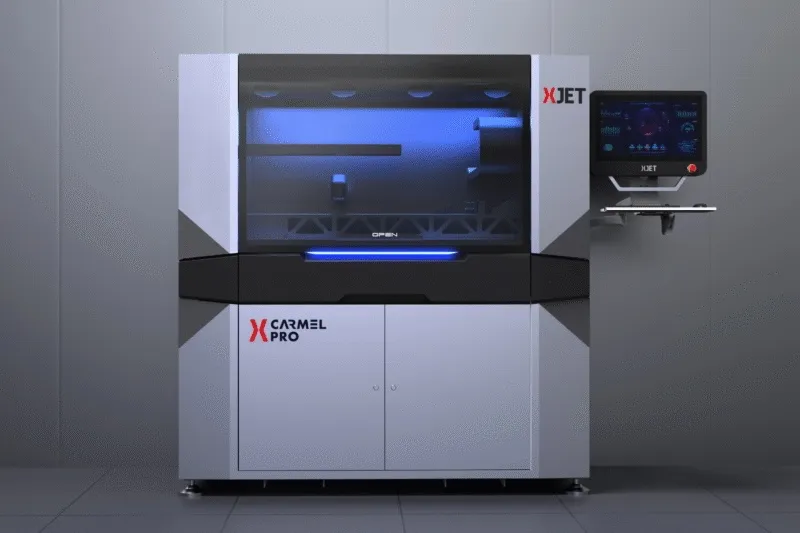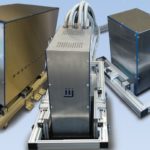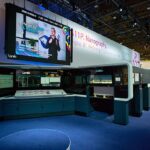- 2018-5-28
- Nessan Cleary 記事紹介
さて、今年のフェスパは終了し、会場撤収の埃っぽい空気の中で、私たちがショーで何を学んだのかと自問自答する時間が始まりました。
So, now that this year’s Fespa has closed and the dust has started to settle its time to ask ourselves what have we learnt from the show?
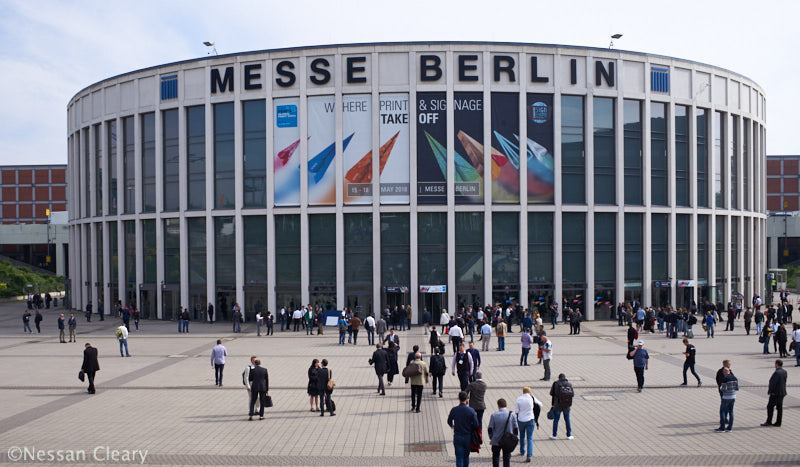
Fespa 2018 took place at the Messe Berlin.
Well, for a start, the Fespa organisers really should put more signage around the Messe to direct people to the show. I just followed the crowd on the first day and hoped someone else knew the way but no one seemed very confident and I overheard quite a few people complaining about this. If only there was a nearby building full of wide format printers where they could have had the signs printed…
さて、フェスパの主催者はまず、Messeの周りに看板を立てて、もっとちゃんと案内すべきです。私は最初の日に群衆の流れに従って歩きましたが、他の誰かがその道を知っていることを期待したんですが、誰もちゃんとした自信は無い様子で、これについてはかなりほ人が文句を言っていましたすぐそこの展示会建物の中にはワイドフォーマットのプリンタで一杯なんだから、看板のプリントなんて簡単だと思うんですが…
The show itself was spread across 10 halls and appeared to be busy all the time I was there though the halls were relatively small. Nonetheless, there were long queues around all of the food vendors and the exhibitors that I spoke to all seemed happy with the sales leads they had gathered and reported healthy sales of kit. In addition, there were a lot of new printers, software and substrates announcements so that the wide format sector feels quite busy and upbeat at the moment and that was certainly my overall impression from this year’s show.
ショー自体は10のホールから構成されていて、個々のホールは比較的小さいとはいうものの、私がそこにいたときはいつも盛況でした。レストランや立ち食いスナックの周りに長い行列でき、私が話した出展者達は、彼らが集めたセールスリードに満足しているように見え、売り上げは好調と言っていました。さらに、新しいプリンター、ソフトウェア、メディアなどの発表がたくさんあり、ワイドフォーマットのセクターは現時点ではかなり好調で上り調子と感じられ、それが今年のショーからの私の全体的な印象でした。
There’s no doubt in my mind that wide format is evolving, with the underlying inkjet technology making its way into other, more industrial sectors from textiles to packaging. Clearly, many of the established wide format vendors are taking the opportunity to diversify into these new areas. But it’s less clear to me that Fespa will really be able to capitalise on this.
ワイドフォーマットが進化していることは間違いありません。基本的なインクジェット技術が、テキスタイルから包装に至る他のより産業部門に進出していることは間違いありません。明らかに、ワイドフォーマット機ベンダーの多くは、これらの新しい分野に多様化する機会を得ています。しかし、フェスパが本当にこの波に乗れるのかどうかについては、私にはあまり確信がありません。
Fundamentally, Fespa still appeals to a wide format audience, though it has successfully built on this through soft signage and some short run home furnishing and garment printing. But of course, this kind of textile printing shares its screen printing roots with Fespa, while other sectors, like packaging, really speak to a very different market, despite some crossover through the common use of inkjet technology.
ソフトサイネージと小ロットののホームファーニシングや衣料品のプリント分野においてある程度成功してはいますが、基本的に、Fespaは依然としてワイドフォーマットの顧客層に向けてアピールしています。もちろん、この種のテキスタイルは、スクリーン印刷のルーツをFespaと共有しますが、パッケージングのような他の分野は、インクジェットを共通技術としていくつかのクロスオーバーがあるにもかかわらず、実際にはワイドフォーマットとは非常に異なる市場を相手にすることになります。
So for me the corrugated corner felt a little forced, mainly because although you can print corrugated boards on wide format printers, the sector has really moved on to bigger, higher volume printers. The main printer running in this hall was an Inca Digital Onset X3, shown by Fujifilm complete with a robot for automated unloading. But I also chatted with Koenig and Bauer about the CorruCut post print flexo Press, which is about as far removed from wide format inkjet as is possible, while HP announced two new 2.8m wide PageWide presses despite not showing any corrugating machines and having only a tiny stand perched on the back of the Onset.
私にとっては、コルゲートプリント(段ボール印刷)のコーナーは、ワイドフォーマットプリンタで段ボーにを印刷することはできますが、そのセクタは実際にはもっと大容量プリンタに移行しているため、少し無理があるように感じました。このホールで動いていた主なプリンタは、Fujifilm、自動荷降ろしロボットをセットして見せていたInca Digital Onset X3でした。しかし、私はKoenig&BauerとCorruCutポストプリントフレキソプレスについても話をしましたが、これはワイドフォーマットのインクジェットからは遠く離れた存在であり、HPは2.8m幅のワンパス機を発表したものの、コルゲート向けマシンは一切展示せず、Inca Onsetの裏手に小さなブースをもっただけでした。
On the display graphics side, the most outstanding machine that I saw was probably HP’s new R2000 hybrid latex printer, now able to print to rigid media, and with white ink, two things that customers have long asked for. I’ve already written briefly about this printer and will come back in a few weeks time to explain the enormous effort that HP had to go to in order to achieve this machine.
ディスプレイグラフィックス分野では、私が見た最も優れたマシンはおそらく、HPの新しいR2000ハイブリッドラテックスプリンタで、リジッドメディアにプリントできるようになっています。私は既にこのプリンタについて簡単に書いてきましたが、このマシンを実現するためにはHPがやってきた莫大な努力を数週間後に改めて書くことにします。
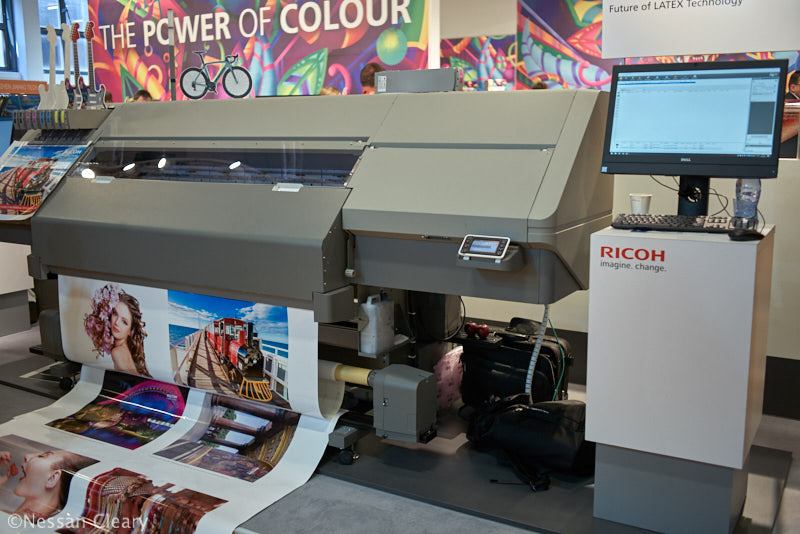
Ricoh has showed off a prototype of its new latex printer to be delivered later this year.
It’s also worth noting that Ricoh is still working on latex printing. Ricoh’s first foray into latex was a co-development with Mimaki – Ricoh supplied the printheads and ink while Mimaki built the chassis. But HP released its third generation latex machines shortly after these printers were announced, neatly killing most of the advantages that Ricoh and Mimaki had. Mimaki quietly abandoned its latex, concentrating on its SUV printer, which also used the same chassis. Ricoh never seemed to have much success and most people assumed the company had given up.
リコーがいまだにラテックス印刷に取り組んでいることは注目に値します。リコーの最初のラテックスへの進出は、ミマキとの共同開発でした。リコーはプリントヘッドとインクを供給し、ミマキは本体を組み立てました。しかし、HPは、これらのプリンタが発表された直後に、第3世代のラテックスマシンをリリースし、リコーとミマキが持っていた利点の多くをしっかり凌駕しました。 ミマキはそっとラテックスを放棄し、同じシャーシを使用していたSUVプリンタに集中しました。リコーはラテックスで決して多くの成功を収めたことはなく、ほとんどの人が同社をあきらめていると思っていました。
But at Fespa Ricoh previewed a brand new latex printer, which it has built entirely itself. Naturally it uses Ricoh Gen5 printheads. There will be both 1.3m and 1.6m wide versions. Angelo Mandelli, wide format product manager for Ricoh Europe, says that the productivity has been improved. It can print at 40 sqm/hr in six pass mode on banner materials and at 25 sqm/hr for production quality on vinyl. The curing temperature is lower at 50º to 60º so that it will take some heat-senstive materials. It prints CMYK plus white for now but Mandelli says that Ricoh will probably add orange and green to expand the colour gamut. Expect a formal announcement over the next couple of months with the machines planned to ship later this year around November time.
しかし、Fespa に於いて、Ricohは全く新しい自社製のラテックスプリンタのプレビューを行いました。もちろん、Ricoh Gen5プリントヘッドを使用しています。 1.3m幅と1.6m幅の二つのバージョンがあります。リコーヨーロッパのワイドフォーマットプロダクトマネージャー、アンジェロ・マンデリ氏は、生産性が向上したと語っています。バナー向けメディアに、6パスモードで40平方メートル/時間、塩ビには25平方メートル/時間で印刷できます。硬化温度は50〜60℃と低く、熱に弱い材料も使うことが出来ます。今ははCMYKと白ですが、マンデリ氏は、Ricohはおそらくオレンジと緑を追加して色域を拡張すると言ってます。数ヶ月後に、正式発表を予定しており、今年後半、11月頃に出荷する予定のようです。
Most of the other new printers were mainly iterative – slightly more productive versions of existing and well-proven designs. Clearly, the Ricoh Gen5 printhead is really popular as nearly all of the new printers that I saw at the show were using this head, including EFI’s Vutek H3, Agfa’s H3300 LED and Mutoh’s PerformanceJet 2508UF. Notable exceptions were Fujifilm’s Acuity Ultra and Inktec’s KX6U, both using Kyocera printheads and SwissQPrint’s updated models, which I believe use Konica Minolta.
他の新しいプリンタのほとんどは、従来の反復性であり、これまで実績のあるプリンタの生産性を少し高めたバージョンでした。リコーGen5プリントヘッドは、EFIのVutek H3、AgfaのH3300 LED、MutohのPerformanceJet 2508UFなど、ほぼすべての新しいプリンタが使用されていたため、本当に人気があるようです。注目すべき例外は、FujifilmのAcuity UltraとInktecのKX6Uで、どちらもKyoceraプリントヘッド、SwissQPrintの最新モデルはコニカミノルタを使用していると思われます。
The other big thing to my mind is the growing use of robotics. There have been a small number of robots in use in the last couple of years, mainly by companies like Zund and Esko for loading and unloading materials to their cutting tables. At the same time, there’s been an increasing use of auto and semi-auto loading systems for wide format printers so it was really only a matter of time before the printer vendors started looking at robots for their loading systems. This is the next step in increasing productivity – getting the substrates on and off the printers and then onto finishing is going to become increasingly important over the next few years and robots can offer a lot of flexibility in solving these issues.
もう一つの大きなポイントは、ロボットの使用が増えていることです。ここ数年、ZundやEskoのような幾つかの会社が、カッティングテーブルに材料を積み下ろしたり降ろしたりするのにロボットを使っていました。同時に、ワイドフォーマットプリンタ用のオートおよびセミオートローディングシステムの使用が増加しています。そのため、プリンタベンダがローディングシステム用のロボットを採用するのは時間の問題でした。これは生産性を高めるための次のステップです。メディアをプリンタに出し入れしてから仕上げすることは、今後数年でますます重要になり、ロボットはこれらの問題を解決するのに多くのフレキシビリティを提供できます。
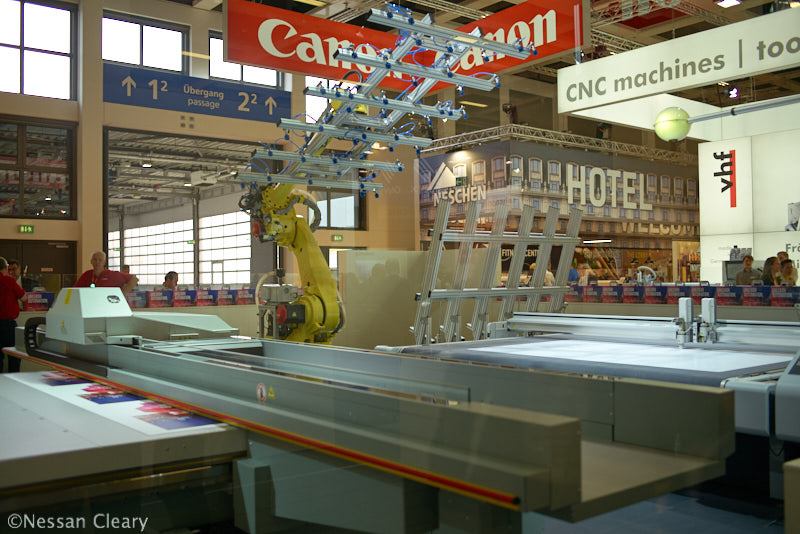
This robot on the Canon stand loads media to the Arizona flatbed, and then unloads it to the cutting table.
Canon had the most eye-catching robot, with a single system placed next to an Arizona flatbed so that it could load the media to the printer, and then unload it direct to an Oce ProCut cutting table. The system was developed with a customer, Daniel Van Vliet, who owns Van Vliet Printing, as well as Rolan Robotics. Canon reckons the price of installing the robot and its interface is roughly £150,000. These robots are built for industrial environments and can easily last 10 years or more with little or no maintenance. Now think of the cost of adding a second shift over that period and it should really be a no-brainer. This also I will come back to in a later post with more details.
キヤノンは、アリゾナのフラットベッドの隣に1台のシステムを設置して、メディアをプリンタにロードしてから、Oce ProCutカッティングテーブルに直接ロードできるように、最も目立つロボットを持っていました。このシステムは、Van Vliet Printing社のオーナーであるDaniel Van Vliet氏と、Rolan Robotics社と共同で開発されました。キヤノンはロボットの設置とそのインターフェースにおよそ15万ポンドという価格設定をしています。これらのロボットは産業環境用に設計されており、メンテナンスをほとんど必要とせずに10年以上使用できます。10年の間の2シフトに対するレーバーコストを考えてみると、それは悩む問題ではないハズです。これについては、近日中にアップする記事で更に詳しく説明します。
Elsewhere, Canon has abandoned its plans to get into 3D printing, apparently deciding that the market opportunity wasn’t big enough. In my opinion, 3D printing will be as important to manufacturing as digital printing has been to printing so this is the dumbest thing I’ve heard since, well, whatever this morning’s news about Brexit is. It’s the equivalent of Kodak deciding that it would be a good idea to pass on wide format printing all those years ago after buying Encad and now wondering why it can’t get into the emerging industrial print market.
他には、Canonは3Dプリントに参入するする計画を放棄しており、市場機会が十分に大きくないと判断しているようです。私は、デジタルプリントがプリント全般とって重要であると同様に、3Dプリントは製造業にとって重要なものと考えています。これは、Brexitについての朝のニュースに接して以来の、これまで聞いたことのないくらい愚かなことです。これは、コダックがEncadを買って数年前にワイドフォーマットに参入し、その後成長する産業用プリント市場に何故参入できないんだろうと考えているのと同じくらい愚かなことです。
That said, quite a few wide format vendors do have 3D printers but chose not to bring them to Fespa so clearly the market does not see much of a crossover between additive manufacturing and wide format. The exceptions were Mimaki, which brought its 3D printer but didn’t seem to do much with it, and Massivit which showed off its new Massivit 1500.
つまり、かなりの数のワイドフォーマット機のベンダーが3Dプリンタを持っていますが、Fespaにそれらを持ち込まないという選択をしたので、市場は付加的製造とワイドフォーマットとの間のクロスオーバーをほとんど見かけません。例外は3Dプリンタを持ち込んだMimakiですが、あまり効果的な見せ方ではなかったように思います。Massivitは新しいMassivit 1500を披露しました。
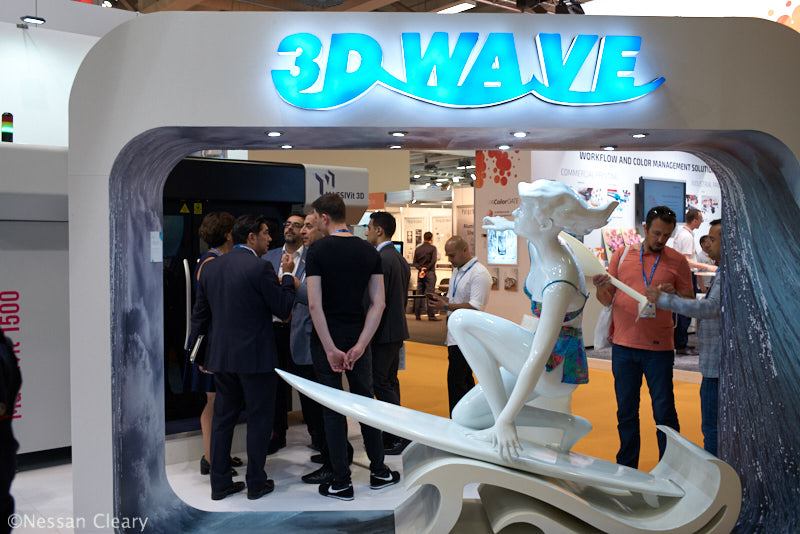
Massivit demonstrated 3D-printed display graphics alongside its new Massivit 1500 3D printer.
The other thing we learned at this show is that Berlin is amazing, the city really hums with life with big bold modern architecture and friendly people. Hopefully Fespa will take us back again soon though next year’s show will see a return to Munich, Germany, while the 2020 show will be in Madrid, Spain.
このショーで学んだもうひとつのことは、ベルリンは素晴らしいということです。街は本当に大胆でモダンな建築と友好的な人達で賑わっています。 2020年のショーはスペインのマドリードで行われ、来年2019年のショーではミュンヘンへに戻りますが、Fespaがもう一度私たちをベルリンに戻してくれることを願っています。
Still, when it rains in Germany, it really rains. And I live in England so I’ve seen rain before. I was congratulating myself on the first day for having the foresight to pick a hotel within a reasonable walking distance of the Messe when the heavens opened and I got soaked. But it was better than spending two hours in a queue for a taxi, especially if, like one of my friends, you happen to be pregnant. People, if you don’t have the common decency to give up your place in an extremely long taxi queue to an obviously pregnant woman in the midst of a rain storm then you’ll never find true happiness, regardless of which print technology you choose.
それでも、ドイツで雨が降るときは、本当に雨が降ります。私はイングランドに住んでいるので、雨がどういうものかを知っていました。私は最初の日に、空の底が抜けてビショ濡れになりましたが、それでもメッセから徒歩圏内にホテルをとった自分の先見性を祝福しました。濡れはしましたが、タクシーの待ち行列で2時間を費やすよりもずっとマシでした。特に業界のる知人女性のように、妊娠しているような場合には特にね・・・。皆さん、あなたがどんなプリント技術を選択しようと、雨や嵐の中で明らかに妊娠している女性に、非常に長いタクシー行列で順番を譲ってあげるという礼儀をもたないなら、あなたは真の幸福を見つけることはできないでしょう。
There are still plenty of other aspects of this Fespa to cover, particularly textile printing, which I’ll come back to it in a future post. So, watch this space! In the meantime, searching on the ‘Fespa2018’ tag should give you most of the new products that were shown.
このフェスパにはまだ多くの側面があります。特にテキスタイルプリントについては、今後の記事で取り上げます。だから、このサイトを継続してウォッチください!’Fespa2018’タグでサイト内検索すると、今回展示された新製品のほとんどが表示されます。



